Saint Helena, Ascension And Tristan Da Cunha
 From Nwe
From Nwe | Saint Helena, Ascension and Tristan da Cunha | |
| Motto: "Loyal and Unshakeable" | |
| Anthem: "God Save the King" "My Saint Helena Island" (unofficial) |
|
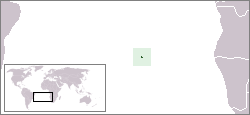
|
|
| Capital | Jamestown |
|---|---|
| Official languages | English |
| Government | Sovereign state |
| - Monarch | Charles III |
| - Governor | Nigel Phillips |
| - Administrator of Ascension | Sean Burns |
| - Administrator of Tristan da Cunha |
Jason Ivory |
| - UK government minister | Tariq Ahmad, Baron Ahmad of Wimbledon |
| UK overseas territory | |
| - Colonial charter | 1657 |
| - Crown colony | April 22, 1834[1] |
| - Ascension added | September 12, 1922 |
| - Tristan da Cunha added | January 12, 1938 |
| - Current constitution | September 1, 2009[1] |
| Area | |
| - Total | 394 km² 152 sq mi |
| Population | |
| - 2016 census | 5,633[2] |
| - Density | 36.5/km² 94.5/sq mi |
| Currency | Saint Helenian pound (SHP) |
| Time zone | GMT (UTC+0) |
| Internet TLD | .sh |
| Calling code | +290 |
Saint Helena, Ascension and Tristan da Cunha is a British Overseas Territory located in the South Atlantic and consisting of the island of Saint Helena, Ascension Island and the archipelago of Tristan da Cunha including Gough Island. Its name was Saint Helena and Dependencies until September 1, 2009, when a new constitution came into force giving the three islands equal status as three territories, with a grouping under the Crown.
Saint Helena, named after Saint Helena of Constantinople since it was sighted on her feast day, is an island of volcanic origin in the South Atlantic Ocean. Ascension is named after the day of its recorded discovery, Ascension Day. Tristan da Cunha, the most remote inhabited island in the world, was named for the sailor who first saw it.
From about 1600 Saint Helena was well known by captains from Portugal, England, France, and the Netherlands. The island was used for collecting food and as a rendezvous point for homebound voyages from Asia. Saint Helena is famous for being Napoleon Bonaparte's place of exile between 1815 and his death in 1821. Longwood House, where Napoleon stayed, and Sane Valley, where he was buried, are owned by the French government, which was given them in 1858.
Geography
The territory of Saint Helena has a total area of 152 square miles (394 km²) and consists of three island groups: Saint Helena, Ascension Island, and Tristan da Cunha. Each island group has its own distinct geography.
The islands are located in one of the most isolated places in the world, more than 1,200 miles (2,000 km) from the nearest major landmass. Until 2017 there was no airport and so travel to the islands was by ship only. The RMS Saint Helena berths in James Bay approximately 30 times per year.
Saint Helena
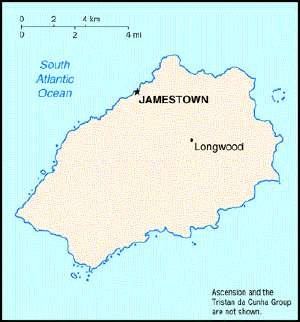
The island of Saint Helena, 10.5 miles (17 km) long and 6.5 miles (10 km) wide, has rugged, volcanic terrain. Its area is 47 square miles (122 sq km). There are several rocks and islets off the coast, including Castle Rock, Speery Island, The Needle, Lower Black Rock, Upper Black Rock (South), Bird Island (southwest), Black Rock, Thompson's Valley Island, Peaked Island, Egg Island, Lady's Chair, Lighter Rock (West), Long Ledge (Northwest), Shore Island, George Island, Rough Rock Island, Flat Rock (East), The Buoys, Sandy Bay Island, The Chimney, White Bird Island and Frightus Rock (southeast), all of which are within one kilometer of the shore.
The center of Saint Helena is covered by forest, some of which has been replanted, including the new Millennium Forest Project.
The highlands are two to three degrees cooler and get a few more inches of rainfall annually than the rest of the island. They are more tropical in nature and contain most of the island's endemic flora, fauna, insects, and birds. The coastal areas are barren, covered in volcanic rock, and warmer and drier than the center of the island.
At the time of its discovery, the island was covered with indigenous vegetation, including the remarkable cabbage tree species. The flora of Saint Helena contain a high proportion of endemic species. The island's interior must have once been a dense subtropical forest, but the coastal areas were probably quite green as well. The modern landscape is very different, with a lot of naked rock in the lower areas and an interior that owes its lushness to imported vegetation. The dramatic change in landscape can likely be attributed to the introduction of goats and new vegetation. As a result, the string tree (Acalypha rubrinervis) and the St. Helena olive (Nesiota elliptica) are now extinct, and many of the other endemic plants are threatened with extinction.
Ascension
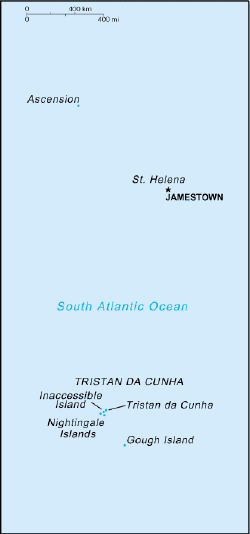
Ascension Island includes the main island and several uninhabited tiny satellite islands and rocks such as Boatswain Bird Island, Boatswain Bird Rock (east), White Rocks (south), and Tartar Rock. The main island has an area of approximately 35 square miles and is formed by volcanic peaks rising from just west of the mid-Atlantic Ridge.
Most of the island is a moonscape of rugged black lava flows and red wind-whipped cinder cones. Where lava has penetrated to the ocean a striking seashore is dotted with white sand. The protected green turtle is perhaps the most notable of the wildlife, coming ashore to lay eggs on the beaches from November to May. The climate is subtropical, with temperatures at the coast ranging from about 68 to 88 degrees Fahrenheit (20 to 31 degrees Celsius). Offshore, there is a variety of open-ocean fish, including sharks, wahoo, tuna, bonito, barracuda, marlin, blackfish, and sailfish.
Off the east coast of Ascension is the tiny island of Boatswain Bird Island. It is a haven for sea birds, to get away from the rats, cats, and people that came to Ascension Island from Europe and Africa. Following a successful campaign to rid the island of feral cats, sea birds are once again nesting on Ascension itself.
Tristan da Cunha
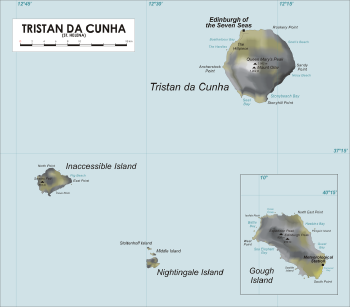
Tristan da Cunha includes the main Tristan da Cunha Island — the world's most remote inhabited island — and several other uninhabited islands: Gough Island, Inaccessible Island, and the three Nightingale Islands. The islands are all mountainous and volcanic. Inaccessible Island and the Nightingale Islands are located 22 miles (35 km) southwest of the main island, while Gough Island is located 245 miles (395 km) south-southeast.
The main island is quite mountainous; the only flat area is the location of the capital, Edinburgh, on the northwestern coast. The highest point is a volcano called Queen Mary's Peak (6,765 ft; 2,062 m). It is covered by snow in winter. The climate is marine subtropical with small temperature differences between summer and winter and between day and night.
Tristan da Cunha is the nesting place of three species of Albatrosses: the Atlantic Yellow-nosed, the Sooty, and the endangered Tristan. Northern Rockhopper penguins also have their rookeries on the islands. Other sea birds are shearwaters, petrels, skuas, and terns.
Geology
St. Helena is a volcanic island, although volcanic activity has long since ceased. The last volcanic eruptions occurred about seven million years ago, and since that time the island has been sculpted into its present form by the forces of erosion. The sea has carved the sheer cliffs that ring the island and streams have incised the deep v-shaped valleys.
The oldest volcanic rocks on Saint Helena are about fourteen million years old and are exposed in the northeastern part of the island. About eleven million years ago, the center of volcanic activity jumped to the southwestern part of the island, where activity persisted until seven million years ago. Most of the eruptions produced the basalt lava flows so evident in the cliffs and valley sides of the island today.
Ascension's main island is a volcanic peak rising from just west of the Mid-Atlantic Ridge. Much of the island is a wasteland of lava flows and cinder cones; 44 distinct craters have been identified.
Tristan da Cunha is also of volcanic origin. In 1961, a volcanic eruption forced the temporary evacuation of the entire population.
History
Saint Helena

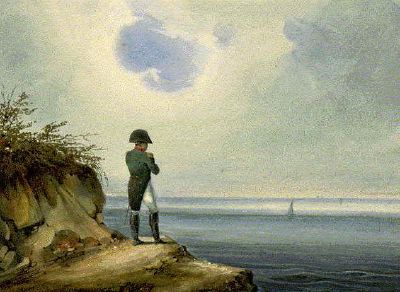
The island of Saint Helena was discovered on May 21, 1502, by the Portuguese navigator João da Nova and named after Helena of Constantinople. The Portuguese found it uninhabited and over time built a chapel and some houses, although no permanent settlement was founded. The Portuguese introduced goats as a source of meat and planted lemon trees for future ship crews, a number of whom were left on the island to recover from scurvy and other ailments.
From about 1600 the island was well known by captains from Portugal, England, France, and the Netherlands. The island was used for collecting food and as a rendezvous point for homebound voyages from Asia. Sometimes ships waited near the island when their captains were hoping to pirate hostile richly laden ships.
The Dutch claimed the island between 1645 and 1659, when it was settled by the English East India Company. A permanent settlement — of British colonists and black slaves — was founded at Jamestown, named after James, Duke of York (later King James II). The English East India Company used the island as a revictualling station, primarily on the long return voyage from India via the Cape of Good Hope. By 1673 nearly half the inhabitants were imported slaves, but between 1826 and 1836 all slaves were freed.
The Dutch retook the island in 1673 but were ejected by the English navy after two months. The island was regranted to the East India Company.
In 1815 the British government selected Saint Helena as the place of detention of Napoleon Bonaparte. He was brought to the island in October of that year and lodged at The Briars, outside Jamestown. In December he was moved to Longwood, where he died in 1821. (His body was returned to France in 1840.)
During this period the island was strongly garrisoned. The British also took control of Ascension Island and Tristan da Cunha at this time, to prevent any French attempts to free Napoleon being launched from these territories. After Napoleon's death the East India Company resumed full control of Saint Helena until April 22, 1834, when it was vested in the British Crown.
In 1810, the first Chinese indentured laborers arrived on the island. In 1840, a Vice Admiralty Court was set up to deal with vessels captured in the slave trade, and more than ten thousand slaves were liberated.
During the Second Boer War (1899–1902), the British military, fearing that Boer prisoners of war might be freed by sympathizers in South Africa, detained around 5,000 POWs on the island.
As a port of call on the long route to the Cape Colonies and India, the island enjoyed prosperity, until construction of the Suez Canal reduced the need for long voyages via the Cape of Good Hope. During World War II, Ascension Island was leased to the United States, which constructed a large airbase.
After World War II, the prosperity of the island and its dependencies decreased. A visit by the Duke of Edinburgh to Ascension, Saint Helena, and Tristan da Cunha for a time raised the profile of the islands. In 1999, the British government announced plans to construct an airport on Saint Helena to bolster the island's economy and reduce dependence on boats for supplies. The airport is scheduled to open in 2010, when the Royal Mail ship is expected to cease operations.
Ascension
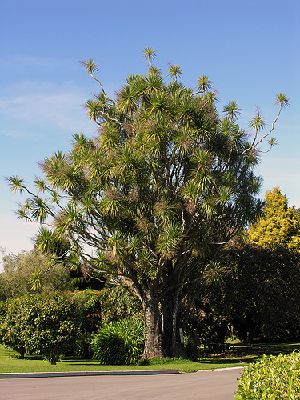
Ascension Island became inhabited in 1815, when the British garrisoned it as a precaution after imprisoning Napoleon Bonaparte on Saint Helena to the southeast.
The location of the island made it a useful stopping point for ships and communications. The Royal Navy used the island as a victualling station for ships, particularly those working against the slave trade. A garrison of Royal Marines was based at Ascension from 1923. In 1922, Ascension was made a dependency of Saint Helena. In 1964, the British government appointed an administrator to represent the governor of Saint Helena on Ascension.
During World War II, the United States built an airbase on Ascension Island, known as Wideawake after a nearby colony of Sooty Terns (locally called 'Wideawake' birds because of their loud, distinctive call, which would wake people early in the morning). The airbase was used by the U.S. military as a stopping point for American aircraft crossing the Atlantic on the way to theaters of operation in Europe and Africa. After the end of World War II, the airbase fell into disuse.
With the space race and the Cold War, Americans returned in 1956. Wideawake Airfield was expanded in the mid 1960s. The runway was extended, widened, and improved to allow its use by large aircraft, and acts as an emergency runway for the Space Shuttle. Ascension Island continues to serve as an important link in American space projects. NASA established a tracking station on the island in 1967 but has since abandoned it.
In 1982, Ascension Island was used as a staging post for the British Task Force during the Falklands War. Following the war, the British retained an increased presence on the island.
Tristan da Cunha
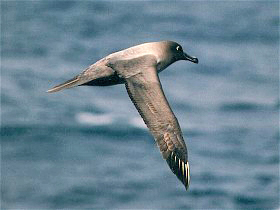
The islands were first sighted in 1506 by a Portuguese sailor, who named the main island after himself. The main island was ignored by early explorers as a possible home due to its rugged mountain landscape, absence of natural harbor, lack of land for agriculture, and a harsh climate with heavy rain and high winds during all seasons.
In 1815 the United Kingdom annexed the islands, ruling them from the Cape Colony in South Africa. This is reported to have primarily been a measure to ensure that the French would not be able to use the islands as a base for a rescue operation to free Napoleon Bonaparte from his prison on Saint Helena. The occupation also prevented the United States from using Tristan as a base, as it had during the War of 1812.
The islands were occupied by a British military garrison, and a civilian population was gradually built up. Whalers also used the islands as a base for operations in the Southern Atlantic. However, the opening of the Suez Canal in 1869, together with the move from sailing ships to coal-fired steam ships, saw the increased isolation of the islands, as they were no longer needed as a stopping port for journeys from Europe to the Far East.
In 1938, the islands were declared a dependency of St Helena. An administrator was appointed to represent the governor. The administrator acts as the local head of government and takes advice from the Island Council, made up of eight elected and three appointed members.
During World War II the islands were used as a Royal Navy station, established to monitor German shipping movements in the South Atlantic.
In 1961, a volcanic eruption forced the evacuation of the entire population. In 1962, a Royal Society expedition went to the island to assess the damage, reporting that the settlement had only been marginally affected. Most families returned in 1963.
Politics
Executive authority is invested in King Charles III.
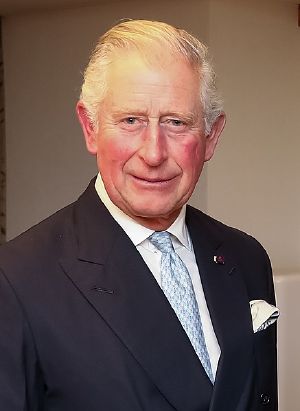
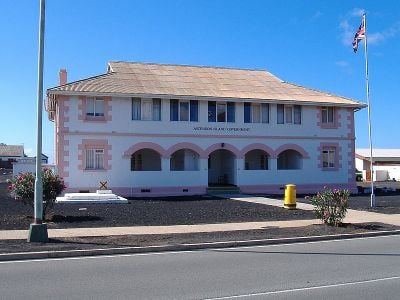
The Saint Helena, Ascension and Tristan da Cunha Constitution Order 2009 (an Order in Council of the Privy Council of the United Kingdom) enacted a new constitution for the territories, which came into effect on September 1, 2009. Although raising Ascension and Tristan da Cunha to equal status with Saint Helena, the constitution is divided into three chapters, one for each territory. Saint Helena has a Governor and a Legislative Council, whilst Tristan da Cunha and Ascension each have an Administrator and an Island Council. Notably the constitution includes (for each territory) the "fundamental rights and freedoms of individuals".[1]
| Part | Crown representative | Council |
|---|---|---|
| Saint Helena | Governor of Saint Helena | Legislative Council of Saint Helena |
| Ascension Island | Administrator of Ascension Island | Ascension Island Council |
| Tristan da Cunha | Administrator of Tristan da Cunha | Tristan da Cunha Island Council |
Saint Helena also has an Executive Council. The Governor of Saint Helena is the British monarch's representative. The three territories share the same Attorney General, and the same Supreme Court and Court of Appeal.
Administrative divisions
Administratively, each territory of Saint Helena, Ascension and Tristan da Cunha is governed by a council. The Governor of the territory presides over the Saint Helena Legislative Council, and an Administrator on Ascension Island and an Administrator on Tristan da Cunha preside over these two areas' Island Councils. See Constitution section below.
| Administrative area |
Area km2 |
Area sq mi |
Population[2] | Administrative centre |
|---|---|---|---|---|
| Saint Helena | 122 | 47 | 4,534 | Jamestown |
| Ascension Island | 88 | 34 | 806 | Georgetown |
| Tristan da Cunha | 207 | 71 | 293 | Edinburgh of the Seven Seas |
| Main island | 98 | 39 | 293 | |
| Inaccessible Island | 14 | 5 | 0 | |
| Nightingale Islands | 3.4 | 1.3 | 0 | |
| Gough Island | 91 | 26 | 0 | |
| Total | 394 | 152 | 5,633 | Jamestown |
The island of St Helena is then further divided into eight districts.[2]
Economy
Until 1966, St. Helena had a monocrop economy based on the cultivation and processing of New Zealand flax for rope and string. St Helena's economy is now very weak, and the island is almost entirely sustained by aid from London. There are no minerals and most of the land is unsuitable for farming, except on a small scale. Potatoes, Corn, and green vegetables are raised for personal use, as are a few cattle, sheep, goats and pigs.
Some make their living from fishing. Tuna, marlin, and barracuda are found in the waters offshore. Saint Helena also produces and exports a unique coffee bean, grown from plants that directly descend from the original seeds brought to the island from Yemen in 1733.
The Saint Helena tourist industry is heavily based around its promotion as the site of Napoleon's imprisonment. An 18-hole golf course also exists, and the possibility for sport fishing is great.
Ascension Island, Tristan da Cunha, and Saint Helena all issue their own postage stamps, which provide a significant income.

Saint Helena also produces and exports Tungi Spirit, made from the fruit of the prickly or cactus pears, Opuntia vulgaris. Tungi is the local name for the prickly or cactus pear.
The Saint Helenian pound, the local currency, is on a par with the Pound Sterling. The government of Saint Helena produces its own coinage and banknotes. The first coin was a half penny produced by the East India Company in 1821. It remains readily available to collectors.
The territory has its own bank, the Bank of St. Helena, which has two branches: in Jamestown on Saint Helena and Georgetown, Ascension Island.
The main economic activity on Ascension island is centered around the military bases at Wideawake Airfield. The island also hosts many communications and relay stations, exploiting its strategic position in the middle of the Atlantic Ocean. The European Space Agency (ESA) also has a tracking station, which tracks the Ariane 5 space rockets shortly after they take off from French Guiana.
The main export item is Ascension Island postage stamps, first issued in 1922. Typically five to six sets of stamps are issued each year.
The main source of foreign income for Tristan da Cunha is the lobster factory and the sale of stamps and coins to overseas collectors. Most people have dual occupations, often working for the local government. Many inhabitants have plots of land on which they grow potatoes.
Demographics
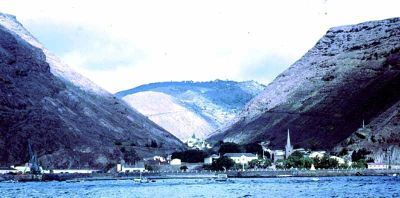
Saint Helena has the largest population, mainly descended from people from West and Southern Africa, the British Isles, Scandinavia and China, (via the indentured servants who were brought in). The island's population is one-half African, one-quarter Chinese, and one-quarter white. In recent decades, many have migrated to the Falkland Islands or the United Kingdom.
Most residents of Saint Helena belong to the Anglican Communion through the Anglican Church of Southern Africa and are members of the Diocese of St Helena, which has its own bishop and includes Ascension Island.
Roman Catholics are served by the Missio sui iuris of Saint Helena, Ascension and Tristan da Cunha, whose office of ecclesiastical superior is vested in the Apostolic Prefecture of the Falkland Islands
Tristan da Cunha has a population of fewer than three hundred inhabitants, most of British descent. Christianity is the main religion, with the largest denominations being Anglican and Roman Catholic. Its remote location makes transport to the outside world difficult. Fishing boats from South Africa regularly service the islands.
Young people often move abroad to find a spouse, since there are few families on the island. Television did not arrive on the island until 2001, and the sole channel available is from the Falkland Islands. Tristan da Cunha's isolation has led to an unusual, patois-like dialect of English being spoken.
There is no indigenous population on Ascension, although around 1,000 people lived there. The military and civilian contractors of the United States and the United Kingdom, along with citizen workers imported from Saint Helena, make up the bulk of the population. Employment is a requirement to stay on the island. There are five settlements, the capital being Georgetown.
Flags
The Flag of the United Kingdom is used for all official purposes; and each of the three territories has its own flag for official use. Between 2002 and 2013 Saint Helena and Tristan da Cunha each had their own separate flags, whilst Ascension Island used the Union Flag, and before 2002 the flag of Saint Helena was used in Tristan da Cunha for all official purposes.
Saint Helena
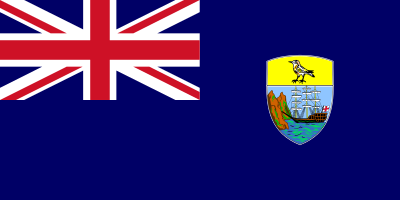
The flag of Saint Helena was adopted on 4 October 1984. It is a defaced (i.e. differentiated) Blue Ensign, i.e. a blue field with the Union Jack in the upper hoist-side quadrant and the shield from the coat of arms of Saint Helena centred on the outer half of the flag. The shield features a rocky coastline and a three-masted sailing ship, with a Saint Helena plover, also known as a wirebird, atop. It was updated in 2018 to depict a more realistic looking wirebird.
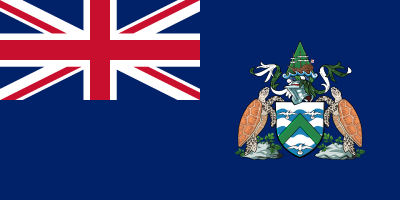
Ascension Island
The flag of Ascension Island was adopted on 11 May 2013.[3] The flag is a blue ensign design, defaced with the coat of arms of Ascension Island. Prior to the adoption of this flag, the island used the Union Flag of the United Kingdom for official purposes.
Tristan da Cunha
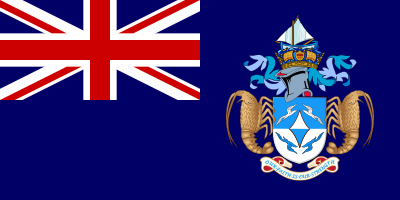
The flag of Tristan da Cunha was adopted on 20 October 2002, in a proclamation made by the Governor of Saint Helena under a Royal Warrant granted by Queen Elizabeth II. Prior to this, as a dependency of Saint Helena, Tristan da Cunha used the flag of Saint Helena for official purposes.
The flag is a blue ensign design, defaced with the coat of arms of Tristan da Cunha – a Tristan longboat above a Naval Crown, with a central shield decorated with four yellow-nosed albatrosses and flanked by two Tristan rock lobsters. Below this is a scroll with the territory's motto, Our faith is our strength.
Transportation
Maritime transport
Each of the three main islands has a harbor or small port, situated in the islands' chief settlement (Georgetown, Jamestown, and Edinburgh). In addition St. Helena has a 118 m long permanent wharf facility, built as part of the airport project, in Rupert's Bay for bulk, containerized, and general cargoes as well as passenger landings. The maritime transport is the only possibility to bring loads and passengers to Tristan da Cunha since this island does not have its own airport.
Airports
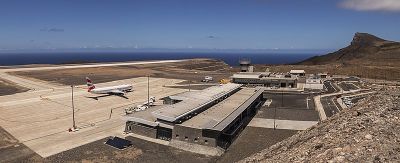
St. Helena Airport received its first scheduled commercial flight on 14 October 2017.[4] Commercial flights, operated by Airlink using an Embraer E190, are scheduled from OR Tambo Airport in Johannesburg each Saturday, returning the same day (or Sunday when the extension to Ascension Island is operating).
Commercial flights between St. Helena and Ascension Island operate on the second Saturday of each month, with the aircraft returning to St. Helena on the Sunday, before continuing on to Johannesburg.[5]
There is a military airfield on Ascension Island (RAF Ascension Island), though potholes on the runway resulted in the April 2017 cancellation of all but essential personnel/supply flights as well as emergency medical evacuations.[6] Regular RAF flights connected Ascension with RAF Brize Norton in the UK and RAF Mount Pleasant in the Falkland Islands, a transport link called the South Atlantic Air Bridge. The flights are mainly to transport military personnel, though the RAF did allow fare-paying civilians to use them. Ascension Island is also used by the US military (which supply the base using MV Ascension) and was a designated emergency landing site for the Space Shuttle program. The islands of Tristan da Cunha can only be accessed by sea due to the lack of an airport.
Vehicular traffic
Saint Helena has 138 kilometers (86 mi)—118 kilometers (73 mi) paved and 20 kilometers (12 mi) unpaved—of roads. Tristan da Cunha has approximately 10 kilometers (6 mi) of paved roads, while Ascension has around 40 kilometers (25 mi) paved.[7] Each island has its own vehicle registration plate system. Traffic drives on the left in all three territories, as in the United Kingdom. Two of the nearest countries to the islands—South Africa and Namibia—also drive on the left.
Notes
- ↑ 1.0 1.1 1.2 St Helena, Ascension and Tristan da Cunha Constitution Order 2009 Retrieved October 13, 2022.
- ↑ 2.0 2.1 2.2 St Helena 2016 Population & Housing Census: Summary Report St Helena Statistics Office. Retrieved October 13, 2022.
- ↑ First Ever Ascension Flag to Fly. Ascension Island Government (2013-03-27).
- ↑ A History Making Weekend for St Helena St Helena Government, October 16, 2017. Retrieved October 13, 2022.
- ↑ First Commercial Flight to Ascension Island St Helena Government, November 14, 2017. Retrieved October 13, 2022.
- ↑ Patrick Wintour, Runway potholes halt regular Ascension Island flights The Guardian, May 2, 2017. Retrieved October 13, 2022.
- ↑ CIA Saint Helena, Ascension, and Tristan da Cunha The World Factbook. Retrieved October 13, 2022.
References
ISBN links support NWE through referral fees
- Britt-Gallagher, Susan, and Tricia Hayne. St Helena: Ascension, Tristan da Cunha. Bradt Travel Guides, 2021. ISBN 978-1784776954
- Mackay, Margaret. Angry Island: The Story Of Tristan da Cunha, 1506-1963. Rand McNally & Co., 1964. ASIN B0007DMPHQ
- Matevosyan, Naira, and Richard Matevosyan. Island Saint Helena: British Overseas. CreateSpace Independent Publishing Platform, 2015. ISBN 978-1511519076
External links
All links retrieved December 22, 2022.
- St Helena, Ascension, Tristan da Cunha profiles BBC
- Saint Helena, Ascension, and Tristan da Cunha Country Reports
- Animals of Saint Helena, Ascension and Tristan da Cunha Animalia
- Saint Helena, Ascension and Tristan da Cunha World Statesmen
- Saint Helena, Ascension and Tristan da Cunha The World Factbook.
Credits
New World Encyclopedia writers and editors rewrote and completed the Wikipedia article in accordance with New World Encyclopedia standards. This article abides by terms of the Creative Commons CC-by-sa 3.0 License (CC-by-sa), which may be used and disseminated with proper attribution. Credit is due under the terms of this license that can reference both the New World Encyclopedia contributors and the selfless volunteer contributors of the Wikimedia Foundation. To cite this article click here for a list of acceptable citing formats.The history of earlier contributions by wikipedians is accessible to researchers here:
- Saint Helena, Ascension and Tristan da Cunha history
The history of this article since it was imported to New World Encyclopedia:
- History of "Saint Helena, Ascension and Tristan da Cunha"
Note: Some restrictions may apply to use of individual images which are separately licensed.
↧ Download as ZWI file | Last modified: 02/03/2023 20:08:31 | 43 views
☰ Source: https://www.newworldencyclopedia.org/entry/Saint_Helena | License: CC BY-SA 3.0
 ZWI signed:
ZWI signed: KSF
KSF